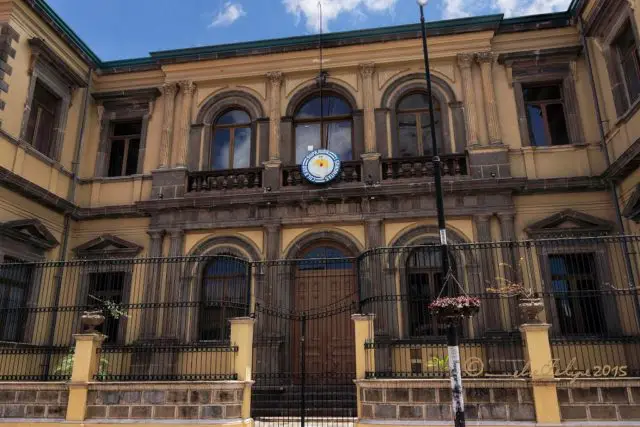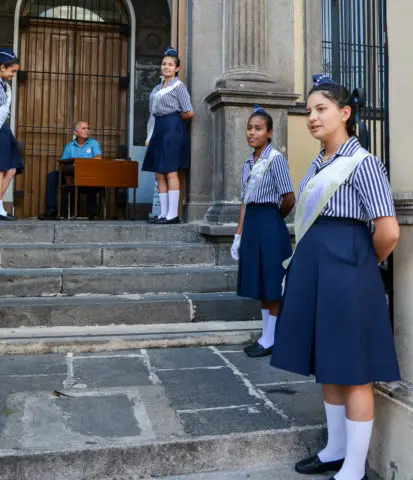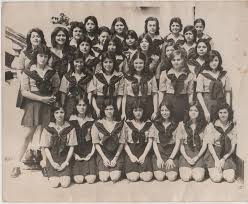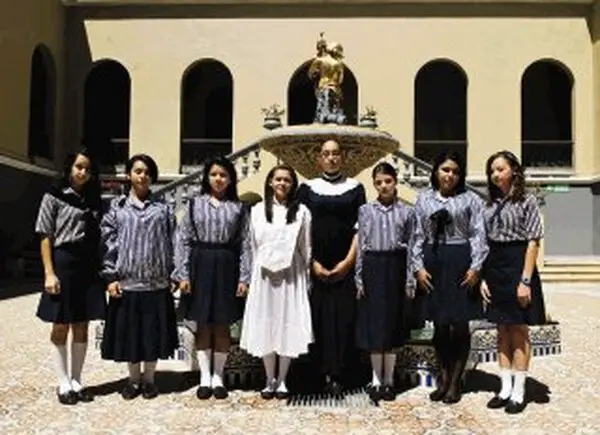
The “Colegio Superior de Señoritas” (Superior College of Young Ladies) is an educational institution located in San José, Costa Rica. Founded in 1888, it was the first institution created in the country for the exclusive secondary education of young Costa Rican women. It is located in a neoclassical building, considered one of the architectural jewels of the Costa Rican capital. It was declared a “meritorious institution” of Costa Rican education in 1994.
Foundation
The Colegio Superior de Señoritas was created on January 14, 1888, by decree no. XIX by the President of the Republic Bernardo Soto and the Minister of Public Education Mauro Fernández.
From the moment of its creation, it became a fundamental pillar of the education of women in our country. Through its classrooms, in its teaching staff and principals (s), leading figures of Costa Rican society have passed in the political, social, cultural and arts fields. Figures that with their vital and professional trajectory have helped to strengthen the foundations of a democratic, participatory, egalitarian and equitable society.
Uniforms

Students with a long skirt and striped blouse. In 1888 the only one who wore the elegant dress of the uniform at the Colegio Superior de Señoritas was the principal. In 1906 the students started attending with this long skirt uniform, and in 1930 the gala dress of the band was instituted.
First Principal
Miss Marian Le Capellain, its first Director, from 1888 to 1908, where she also taught English. Of the Protestant religion, she was born in the Island of Jersey, England and at the age of fourteen moved to New York with her family, where she concluded her studies. Arriving in Costa Rica in 1872 as the governess of the daughters of former Salvadorian president Rafael Zaldívar. She was the stepsister of Mauro Fernández, Secretary of Public Instruction. She also had a private school that kept open until 1886. She participated in the Society “La Gota de Leche” (The Drop of Milk), a social assistance organization founded in 1913 to improve the nutrition of the poorest children, supported by feminists of the time.
It was she who provided the organization to the College and the first teaching plans, divided into two sections: Literary and Pedagogy. “In this last section, the students could aspire to the diplomas of a primary school teacher or secondary school teacher.
First Bachelor’s Degree

Initially, the Colegio Superior de Señoritas did not grant the Diploma in Humanities that we know today as the Bachelor’s degree (equivalent to High School Diploma). The first woman who graduated as a Bachelor, completing her last year at the “Liceo de Costa Rica” and later becoming the first woman who graduated as a Lawyer in the country, was Ángela Acuña Braun.
This institution received students from all social classes because, since its first year of operation, the State has granted a certain number of scholarships distributed by province, with the purpose that the graduates return to serve their communities. These scholarships not only included tuition exemption and help in school supplies, but also a pension for students coming from remote places. The intention was that once prepared, these women returned to their places of origin to serve as teachers in public schools.
Impact on Costa Rican Women’s Culture / Politics 19th-20th Century
During the last decade of the 19th century and the first 50 years of the 20th century, the directors, teachers, and students of the School had great influence in shaping the feminine culture of Costa Rica and played an unusually central role at times crucial to the political life of the country. Likewise, it is necessary to point out that the origin of feminism in Costa Rica is closely linked to the Colegio Superior de Señoritas.
As stated by Lic. María Eugenia Dengo Obregón, the students of the first years of operation of the Colegio Superior de Señoritas constituted the first contingent of women who made themselves felt, as a generation, in the development of the country. The majority of students, teachers, and directors took an active part in the fight against the dictatorship of the Tinoco brothers, in the days of June 1919. Students and professors marched through the streets, confronted the police and security forces during four days of urban protests. The events became increasingly serious, culminating in the burning of the newspaper “La Información”.
In October 1923, the graduates, teachers and the director of the College, participated in the founding of the Costa Rican Feminist League, the first explicitly feminist organization in the country, to press for women’s suffrage. The official ceremony was in the hall of the Colegio Superior de Señoritas and the first board of directors was integrated, among others, by its Principal Esther de Mezerville, the distinguished graduate Angela Acuña Braun and the physical education teacher Ana Rosa Chacón González, who years later would be one of the first three female deputies of the country.
Already in June of that year (1923), a debate had been held at the Colegio Superior de Señoritas on the advisability of granting the vote to women: the first formal debate in Costa Rica regarding the issue that, also, as a starting point for the presentation to the National Congress of a petition in favor of the female vote.
When the Teacher training (Normalista) section closed its doors in 1923, its graduates represented a large part of the teaching force of the country’s primary schools, as well as nurses, social workers, philanthropic organizations and school inspections, all activities that pioneered promoting occupations and public roles for women.
Costa Rican women’s organizations had never been as politically and professionally coherent, nor as forcefully demanding as they were under the leadership of the staff and students of the Colegio Superior de Señoritas during the first three decades of the twentieth century. The creation of a specialized teacher staff in that institution was one of the factors that strengthened an axis of increasing coherence and public militancy. A complex social composition and a progressive intellectual environment promoted an egalitarian and feminist spirit among the graduates, who did not hesitate to deploy in the streets of San José.
Declaration of the “Benemérita de la Patria” Institution (1994)

The role played by the Colegio Superior de Señoritas in the development of Women’s (active) citizenship within the country, was rightly recognized by the National Legislative Assembly, granting the title of “Benemérita de la Patria”, (With Great Merits for the Fatherland), “Institution of Culture”, through Legislative Agreement No. 2886 of April 26, 1994, and published in the Official Gazette La Gaceta, No. 86 of May 5, 1994.

